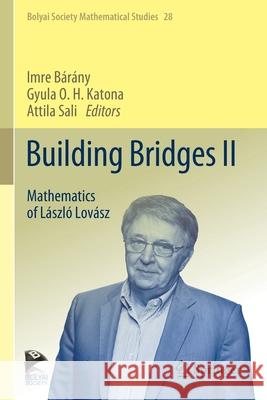Building Bridges II: Mathematics of László Lovász » książka
topmenu
Building Bridges II: Mathematics of László Lovász
ISBN-13: 9783662592069 / Angielski / Miękka / 2021 / 614 str.
Building Bridges II: Mathematics of László Lovász
ISBN-13: 9783662592069 / Angielski / Miękka / 2021 / 614 str.
cena 403,47 zł
(netto: 384,26 VAT: 5%)
Najniższa cena z 30 dni: 385,52 zł
(netto: 384,26 VAT: 5%)
Najniższa cena z 30 dni: 385,52 zł
Termin realizacji zamówienia:
ok. 22 dni roboczych
Bez gwarancji dostawy przed świętami
ok. 22 dni roboczych
Bez gwarancji dostawy przed świętami
Darmowa dostawa!
Kategorie:
Kategorie BISAC:
Wydawca:
Springer
Seria wydawnicza:
Język:
Angielski
ISBN-13:
9783662592069
Rok wydania:
2021
Wydanie:
2019
Numer serii:
000080767
Ilość stron:
614
Waga:
0.86 kg
Wymiary:
23.39 x 15.6 x 3.23
Oprawa:
Miękka
Wolumenów:
01
Dodatkowe informacje:
Wydanie ilustrowane











